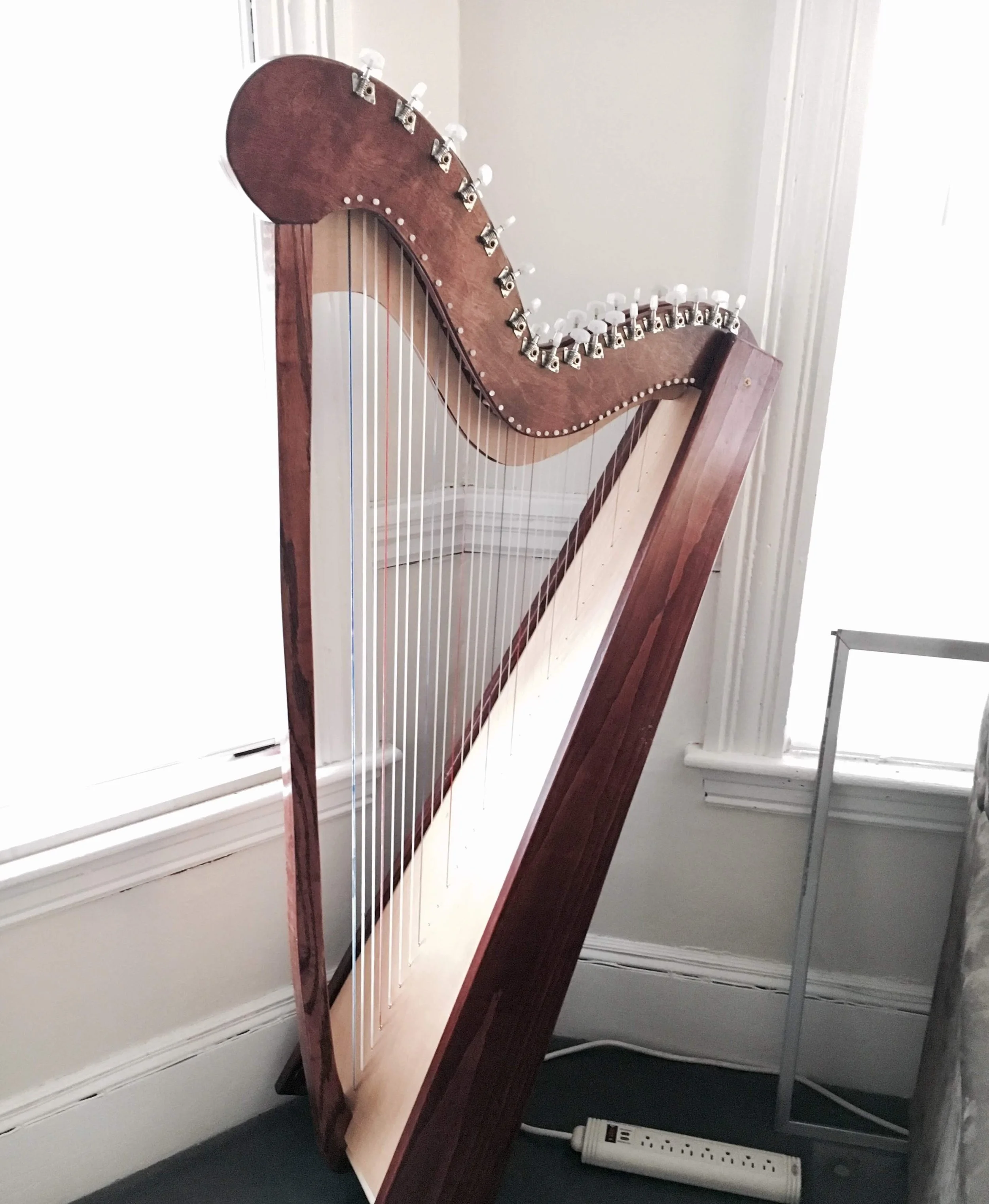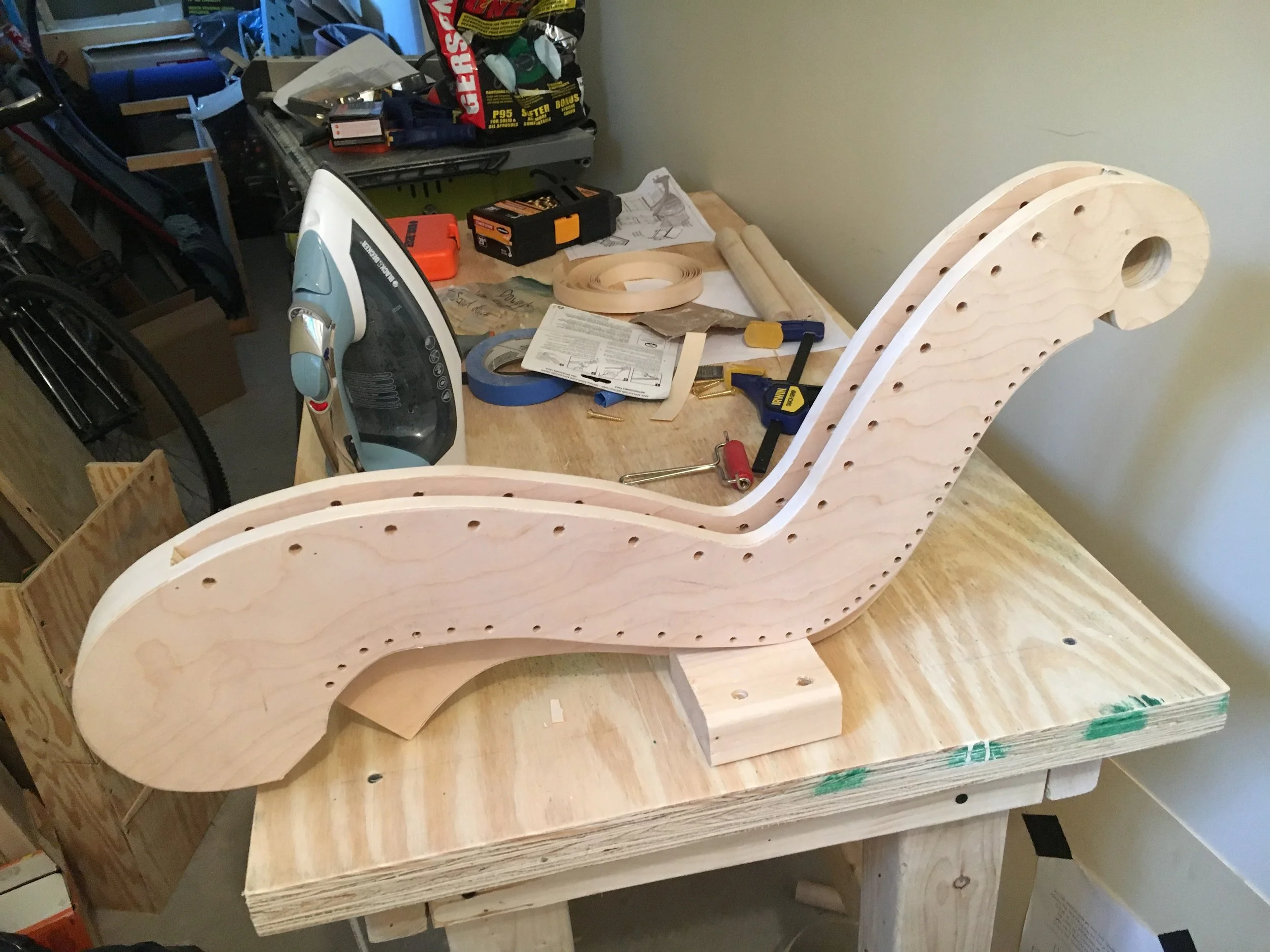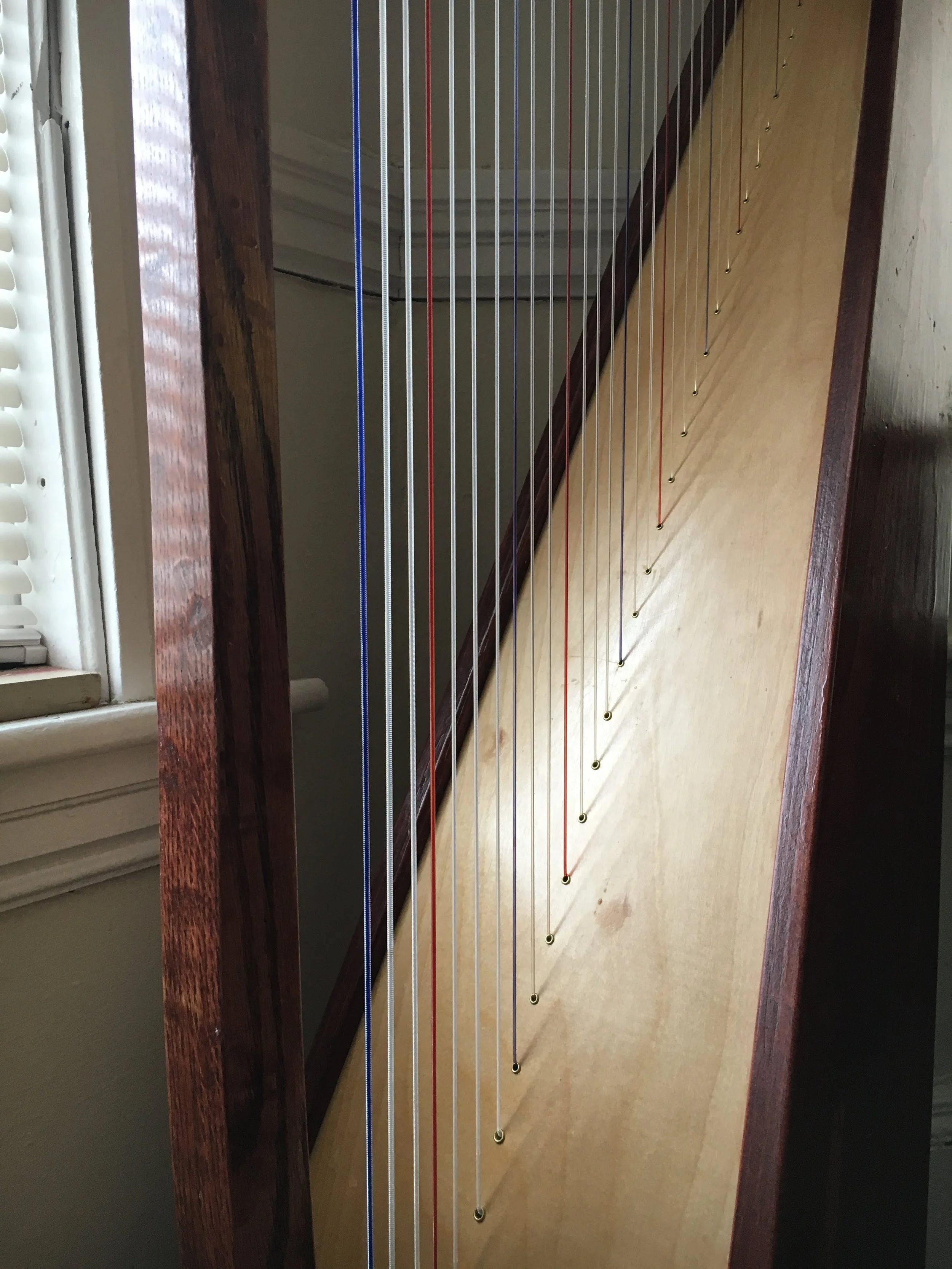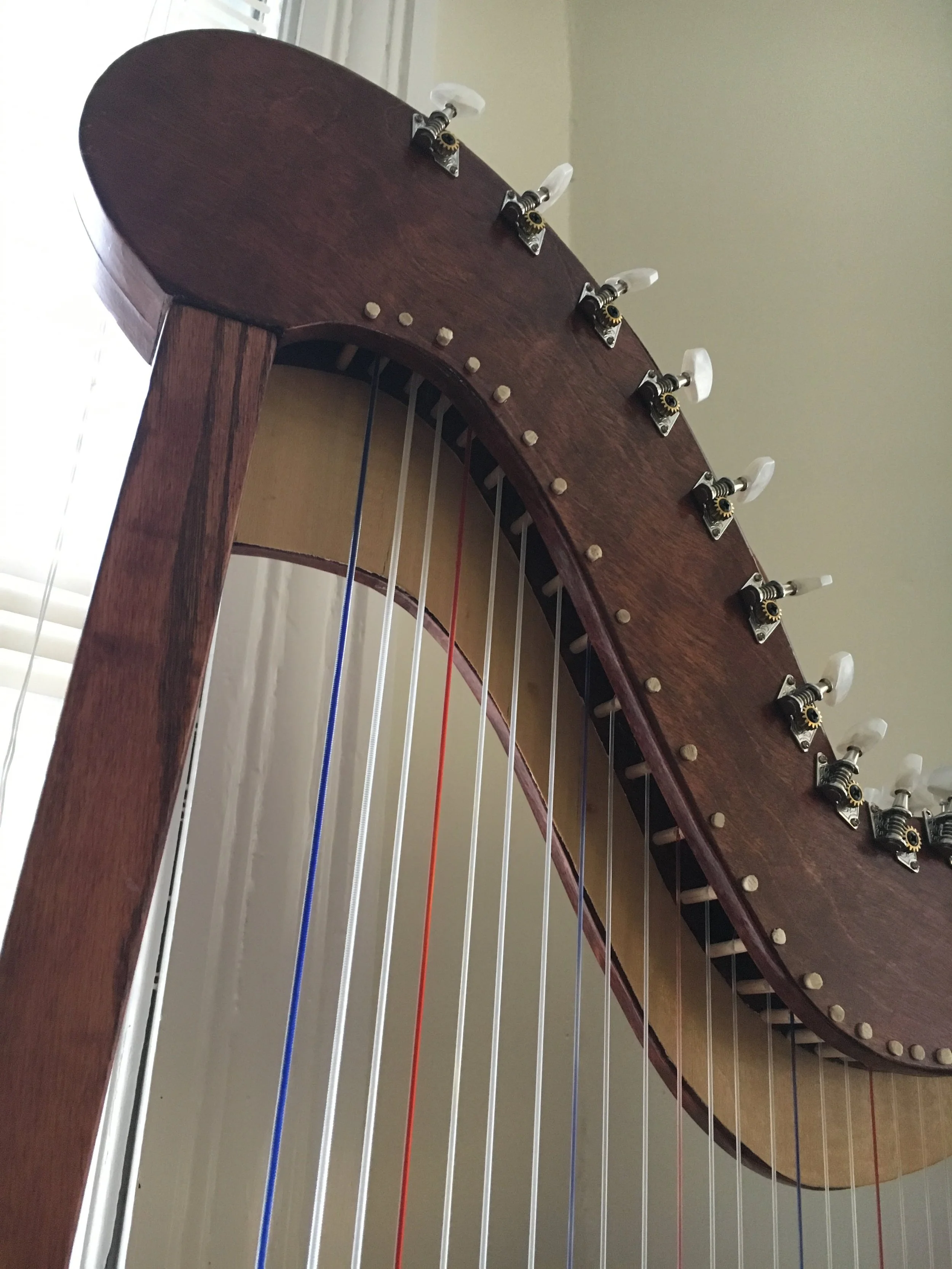
2016-2017
A Tale of Two Harps
Scroll ↓
The first time I heard the sound of a harp, I just knew I had to build one
It all started with the first harp I built according to plans from John Kovac, up on the third floor apartment in the kitchen using nothing more than a $7 hand saw and a lot of elbow grease. As soon as I finished a simple 26 string pine instrument without as much as a sound box, I became eager to one-up myself, and began on version 2.0, using the skills I had gained from building the first model.
Unfinished neck of the harp
Close up of the soundboard (Blue strings are Cs, Red strings are Fs)
In the new iteration, I researched the material properties of wood to understand why dense and tough wood is necessary to support the stresses of the pillar, but surprisingly soft and lightweight wood is ideal for the soundboard to best communicate the vibrations of the strings
An excel spreadsheet was key in order to relate the desired properties of the string like length, modulus of elasticity, and desired maximum stress, to the most well-suited diameter for the string. Using this information, I was able to buy the proper strings to cover almost five octaves, tuned in a C Major scale.
Close up of the dowels / bridge pins of the neck
After adding veneers, wood stain, and lacquer, I could move on to string up and tune the instrument. Once I heard the bright and resonant tone it produced, many miles ahead of the weak sound of the first harp, I knew my months of hard work had paid off.
To explore the full documentation of the process, check out my Instructables article: Building a 35 String Paraguayan Harp
This article won 1st prize in a sitewide contest, which resulted in me receiving a beautiful band saw to add to my collection of tools.
Please enjoy my [incredibly mediocre] attempt at “Trip to Sligo” played on the harp



